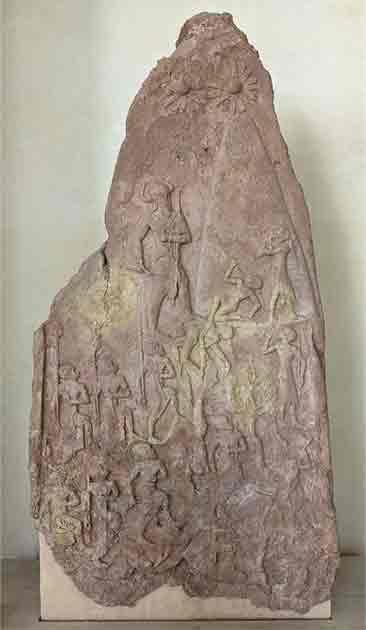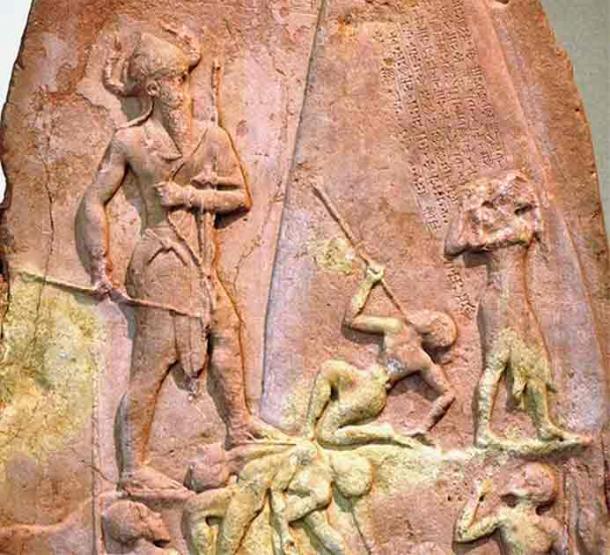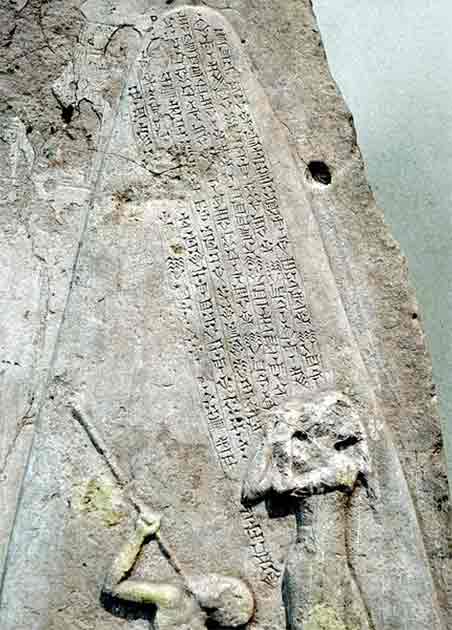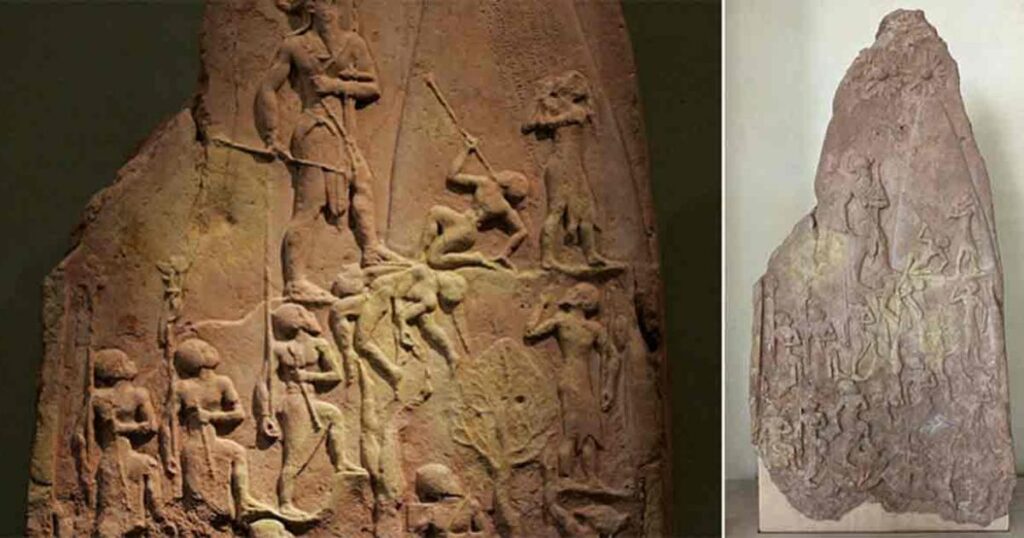The Akkadian Empire rose as one of the first great powers in Ancient Mesopotamia, the cradle of civilization. Succeeding the venerable culture of Sumer, this empire was centered on the great city of Akkad, from which its mighty rulers expanded and subjugated their neighbors. The rulers of the Akkadian Empire, being the first conquerors in recorded history, had to be truly powerful, having created something that never existed before: an empire. Their power was often displayed on lavish monuments and steles that told of their great deeds and conquests. The Victory Stele of Naram-Sin is one of the best-preserved and most detailed such monuments, depicting one of the many conquests by the Akkadian Empire.
The Mighty King Naram-Sin and His Lavish Victory Stele
Naram-Sin of Akkad, reigning between 2254 and 2218 BC, was the grandson of the famous and mighty Sargon of Akkad, the man who first created the Akkadian Empire. As such, Naram-Sin was destined for great power from birth. Such a lofty position certainly required great responsibility and power, but Naram-Sin proved to be well-suited for the role. He elevated the empire even further, and it reached its maximum extent during his rule. Subjugating the neighboring tribes and kingdoms, Naram-Sin firmly proved that the Akkadian Empire was the most powerful realm at that time. One of his greatest victories, over the enemy tribe of Lullubi, was forever etched in stone on his great victory stele.

Discovery of the Stele
The stele was discovered in 1898 by Jean-Jacques de Morgan, a French archaeologist, at the site of the Elamite capital city of Susa. This expertly carved relief was meant to serve as a testament to the might and glory of one of the most powerful rulers of the Akkadian Empire. It is a truly impressive bas-relief sculpture, crafted during the king’s lifetime, and it depicts King Naram-Sin in a triumphant, larger-than-life pose, showcasing his victorious military campaign against the Lullubi people who dwelt in the Zagros Mountains. The stele is considered a masterpiece of Mesopotamian artistry and a window into the socio-political landscape of the time.
Description of the Stele
The monument is crafted from pink sandstone and measures approximately 6.7 feet (2 m) in height. It was originally erected in the ancient city of Sippar, although it was later plundered and taken to Susa by the Elamites in the 12th century BC. Despite its tumultuous journey through time and across regions, the stele remained remarkably well-preserved, offering scholars invaluable insights into the artistic and cultural achievements of the Akkadian civilization.

The Great King of Akkadians
The stele portrays Naram-Sin as a divine ruler, with his figure towering over his defeated enemies, symbolizing his unparalleled power and authority. He is depicted wearing a horned helmet, a symbol of divinity in Mesopotamian culture, and is adorned with royal regalia, including a flowing beard and a ceremonial robe. With his right hand raised in a gesture of adoration, Naram-Sin receives the blessings of the sun god, Shamash, affirming his status as a chosen leader favored by the gods.
The central theme of the stele is Naram-Sin’s military triumph over the Lullubi people, a mountainous tribe that lived in the area of modern-day Iran and parts of Iraq. The composition is dynamic and dramatic, with the king leading his army up a steep mountain slope, trampling over fallen enemies along the way. The Lullubi warriors, depicted with exaggerated facial features and wild, unkempt hair, are shown in a state of chaos and defeat, their weapons scattered, and their bodies strewn across the battlefield. This portrayal not only celebrates Naram-Sin’s military prowess but also serves as a warning to potential adversaries of the consequences of defying Akkadian rule.

Propaganda Tool
The stele certainly served as a propaganda tool, conveying a carefully crafted message of imperial dominance and divine sanction. The inscription accompanying the relief glorifies Naram-Sin as the “King of the Four Quarters,” emphasizing his claim to universal sovereignty and legitimizing his aggressive expansionist policies. By associating himself with the sun god Shamash, Naram-Sin seeks to elevate his own status to that of a divine ruler, thereby justifying his actions and solidifying his grip on power. In fact, Naram-Sin was the first Akkadian ruler to proclaim himself a living god. He was the chief deity of Akkad itself.
A Relic of Civilization’s Dawn
Roughly a thousand years after it was created, the victory stele of Naram-Sin was plundered by the King of Elam, Shutruk-Nahhunte, after he defeated the city of Sippar. A surviving Elamite inscription on the stele commemorates this event:
“I am Shutruk-Nahhunte, son of Hallutush-Inshushinak, beloved servant of the god Inshushinak, king of Anshan and Susa, who has enlarged the kingdom, who takes care of the lands of Elam, the lord of the land of Elam. When the god Inshusinak gave me the order, I defeated Sippar. I took the stele of Naram-Sin and carried it off, bringing it to the land of Elam. For Inshushinak, my god, I set it as an offering.”

The victory stele, once a mighty monument of a victorious god-emperor, became a relic. But even a millennia after it was erected, it was seen as a powerful and important artifact, being triumphantly plundered by a new king.
But even so, thousands of years after it was made, the stele of Naram-Sin continues to inspire awe and teach us important history lessons. And as a glimpse into the furthest reaches of our civilization, it shows us that in the past, only brutal kings and overlords managed to achieve greatness.

